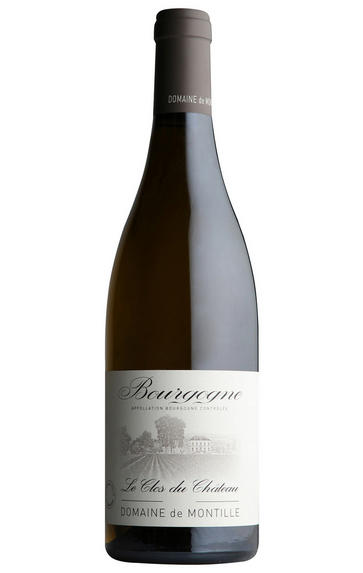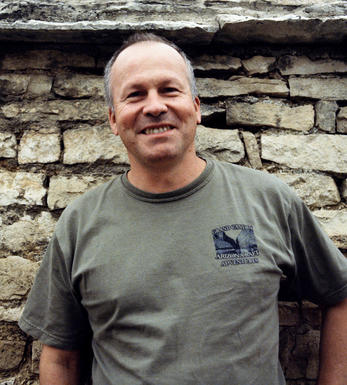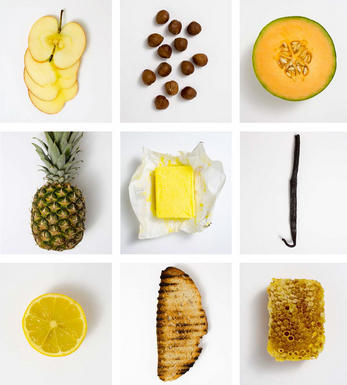
2018 Bourgogne Blanc, Clos-du-Château, Domaine de Montille

Critics reviews
The 2018 Bourgogne Blanc comes from vineyards acquired in 2011/2012 and located near Château de Puligny-Montrachet, and is vinified in 600-liter barrels. It has a light bouquet with scents of green apple and a touch of seawater developing with aeration. The palate is steely on the entry with a fine bead of acidity. There is good tension here, and a briskly citric, lightly spiced finish.
Drink 2021 - 2024
Neal Martin, Vinous.com (January 2020)
Friendly and enveloping, de Montille's 2018 Bourgogne Blanc Le Clos du Château bursts with aromas of orange rind, pear and musky peach, followed by a medium to full-bodied, fleshy palate. Already charming and expressive, this will drink well young.
Drink 2020 - 2026
William Kelley, Wine Advocate (February 2020)
About this WINE

Domaine de Montille
The De Montille family has long been a venerable one in Burgundy, though Domaine de Montille’s reputation was properly established in 1947: prominent Dijon lawyer Hubert de Montille inherited 2.5 hectares in Volnay, later adding further parcels in Volnay, Pommard and Puligny. Hubert’s style was famously austere: low alcohol, high tannin and sublime in maturity.
His son, Etienne, joined him from ’83 to ’89 before becoming the senior winemaker, taking sole charge from ’95. Etienne also managed Château de Puligny-Montrachet from ’01; he bought it, with investors, in ’12.
The two estates were separate until ’17, when the government decreed that any wine estate bearing an appellation name could no longer offer wine from outside that appellation.
The solution was to absorb the château estate into De Montille – the amalgamated portfolio is now one of the finest in the Côte d’Or.
Etienne converted the estate to organics in ‘95, and to biodynamics in 2005, making the house style more generous and open, focusing on the use of whole bunches for the reds.

Bourgogne Blanc
Bourgogne Blanc is the appellation used to refer to generic white wines from Burgundy, a wide term which allows 384 separate villages to produce a white wine with the label ‘Bourgogne.’ As a result of this variety, Bourgogne Blanc is very hard to characterise with a single notable style, however the wines are usually dominated by the presence of Chardonnay, which is just about the only common factor between them. That being said, Chardonnay itself varies based on the environmental factors, so every bottle of Bourgogne Blanc will vary in some way from the next! Pinot Blanc and Pinot Gris are also permitted for use in Bourgogne Blanc under the regulations of the appellation.
As Bourgogne Blanc is very much an entry-level white wine for most regions in Burgundy, prices are usually very reasonable, and due to the terroir and climate of Burgundy, Bourgogne Blanc wines tend to have a strong acidity to them, combined with a vibrant and often fruity palate when compared with other whites from the New World, say, allowing fantastic matchmaking with many different kinds of food.

Chardonnay
Chardonnay is often seen as the king of white wine grapes and one of the most widely planted in the world It is suited to a wide variety of soils, though it excels in soils with a high limestone content as found in Champagne, Chablis, and the Côte D`Or.
Burgundy is Chardonnay's spiritual home and the best White Burgundies are dry, rich, honeyed wines with marvellous poise, elegance and balance. They are unquestionably the finest dry white wines in the world. Chardonnay plays a crucial role in the Champagne blend, providing structure and finesse, and is the sole grape in Blanc de Blancs.
It is quantitatively important in California and Australia, is widely planted in Chile and South Africa, and is the second most widely planted grape in New Zealand. In warm climates Chardonnay has a tendency to develop very high sugar levels during the final stages of ripening and this can occur at the expense of acidity. Late picking is a common problem and can result in blowsy and flabby wines that lack structure and definition.
Recently in the New World, we have seen a move towards more elegant, better- balanced and less oak-driven Chardonnays, and this is to be welcomed.


Buying options
Add to wishlist
Description
Domaine de Montille’s Clos-du-Château is one of the finest examples of white Burgundy. It is produced from a vineyard within the grounds of the Château de Puligny-Montrachet in the Côte de Beaune. Mineral and fresh with lovely, ripe peach fruit flavours, this is a versatile wine to enjoy with an array of dishes. Smoked salmon, ham, rich vegetarian recipes or even a cheeseboard are all delicious accompaniments. Personally, I would enjoy a glass or two on their own.
Drink 2020 - 2026
Adam Bruntlett, Senior Buyer, Berry Bros. & Rudd
wine at a glance
Delivery and quality guarantee